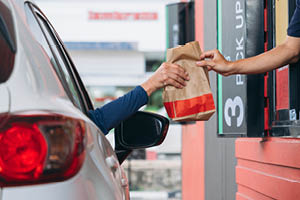How our driving, eating, and fueling habits are driving up chronic disease risk
You take care of your car. You refuel it with the right gasoline, you schedule oil changes, and you don’t wait until it breaks down to do something.
But what about your body?
The truth is, for many of us, our cars are more than a way to get around—they’ve shaped how we eat, how we move, and how we live. And in doing so, they’re quietly driving up our risk for Type 2 diabetes.
1. You’re Sitting in It
We sit at work. We sit at home. And we definitely sit in our cars.
According to the U.S. Department of Transportation, the average American spends about 61 minutes per day driving—that’s the equivalent of over 15 full days a year behind the wheel doing nothing but sitting still.
👇Comment on this blog with how much driving you do per day
Long periods of inactivity lower insulin sensitivity, slow metabolism, and increase the risk of obesity and blood sugar dysregulation.
Your car isn’t making you unhealthy, but how much time you spend in it—and how little you move—might be.
2. Fueling Your Car (and Body) at the Same Place

When you’re low on gas, you pull into a station and fill up.
But let’s be honest: you’re probably also walking inside for a snack.
Gas station food is designed for speed, shelf life, and craving—not for nourishment.
Sugary drinks, salty chips, processed pastries, and “grab-and-go” options dominate the shelves. And when you eat that kind of fuel regularly—especially while sitting still—it sets the stage for blood sugar spikes, weight gain, and yes, increased diabetes risk.
If your car got the same quality fuel you just ate… how far would it go?
3. Road Trips, Routines, and Excuses
How often have you said:
- “I’ll just grab something quick.”
- “We’re traveling—I’ll eat better when we get home.”
- “It’s only a snack.”
We make these decisions in a rush. Behind the wheel. Running errands.
Over time, these tiny choices become habits—and habits shape health.
Skipping meals and then bingeing on gas station snacks, constantly drinking sugary drinks while driving, or turning every road trip into a snack-fest… it adds up.
You wouldn’t keep driving your car on low-quality fuel without expecting consequences. The same goes for your body.
4. Rewire How You Fuel
Let’s be clear: the car isn’t the problem.
The culture we’ve built around convenience, speed, and skipping real meals is.
But you can change that—without giving up your car keys.
Here’s how:
• Fuel at home first. Eat a balanced meal before getting in the car so you’re not tempted at every gas station.
• Keep smarter snacks in the car. Try protein bars, trail mix, unsalted nuts, fruit, or even cut-up veggies in a cooler bag.
• Use your cup holders for water. Skip the sugary drinks and keep a full water bottle within reach.
• Make pit stops that aren’t about snacks. Stretch your legs instead of browsing aisles.
5. Your Car Can Still Help You Stay Healthy

Ironically, newer habits around electric vehicles are shifting how we interact with gas stations.
No more gas? No more candy aisle impulse buys.
Longer charging times? More time to stretch, walk, or refocus.
Even if you’re still driving a gas-powered car, the takeaway is the same: you’re in control of how you fuel your body—even when you’re fueling your car.
Don’t Let Your Car Drive Your Health
You wouldn’t ignore the warning lights in your dashboard—don’t ignore the ones in your body.
Fuel intentionally. Move when you can. Break the gas station snack cycle.
Type 2 diabetes is on the rise, but small changes make a big difference. If you’re ready to take control of your health, talk to your Stellis Health provider about screenings, nutrition support, and preventive care.
👉 Book your appointment today






